By combining dynamic and static analysis techniques, Invicti automatically detects and verifies security vulnerabilities in web applications and ensures that they are managed in an integrated manner into development processes.
Leave No Room for Vulnerabilities in Your Web Applications with Invicti
Invicti is a company that detects vulnerabilities in modern web applications quickly, accurately and repeatably; It is an application security platform that secures the software development cycle without interrupting it with automatic verification and integration features.
By combining IAST and SCA analysis techniques, DAST examines both application behaviors and components, making visible not only potential but actually exploitable vulnerabilities.
Proven Vulnerability Verification
False positives are eliminated by directly testing the exploitability of security vulnerabilities detected by the Proof-Based Scanning method.
Identity and Session Management Compliance
The scanning infrastructure, which supports modern authentication structures such as OAuth, JWT, SAML, provides full coverage in applications with session depth.
Adaptation to Modern Application Architectures
High-fidelity analysis is performed on JavaScript-heavy SPAs, AJAX dynamics, and client-side rendered structures.
Open Source Component Visibility
Risks that may arise through library and component dependencies are made visible and potential vulnerabilities are associated at the application level.
Technology & Service Mapping
Architectural awareness is obtained by analyzing the building blocks, technologies and components used in the scanned application.
Invicti Platform
Web application security is becoming more complex and integrated with rapidly evolving software processes. Invicti doesn’t just show vulnerabilities with its scanning engine, validation capabilities, and integration layer; It establishes a sustainable security cycle between security teams and developers.
Evidence-Driven Security Analysis
Dynamic scan results are supported by automated verification processes, generating outputs that are filtered for exploitability.
Buildable CI/CD integration
AppSec processes are carried out uninterruptedly through a configurable integration infrastructure with DevOps tools such as Jenkins, GitLab, and Azure DevOps.
Browser-Supported Session Management
Complex user paths such as multi-step forms, token migrations, and dynamic session structures are controlled, eliminating the risk of being out of scope.
Asset Inventory Up-to-Date
Web application inventory is reviewed on an ongoing basis; Changes or newly added systems are automatically covered.
API-Based Service Review
RESTful services, microservice endpoints and middleware APIs are included in the testing process and client-server traffic is analyzed in detail.

Why Invicti?
Powered by the world’s best DAST, the Invicti Application Security Platform correlates findings in DAST, SAST, API Security, and more, and DAST acts as a validation layer that verifies the exploitability of vulnerabilities detected by other tools; thus turning your investment from an ordinary security tool into a power multiplier for your entire AppSec program.
True Open Focus
Each detected vulnerability is automatically verified to see if it can be exploited. This method eliminates false positives and makes it possible to prioritize only critical threats.
Developer-Integrated Flow
Invicti connects directly to issue tracker systems, ensuring that findings are quickly retrieved by development teams. It bridges the gap between the development process and the security process.
Scan Continuity
Thanks to the scheduling scan tasks and automatic notification infrastructure, applications are kept under control at regular intervals. Security auditing becomes sustainable without the need for manual follow-up.
Session Depth Support
It supports multi-layered identity management structures such as OAuth, SAML, and token-based migration. The risk of out-of-scope is reduced in ingress-controlled, session-enabled, and dynamic web applications.
Centralized Security Control
Enterprise-scale control becomes easier with user-based authorization, project management and management of global settings from a single panel. Coordination between teams increases, monitoring processes are simplified.
Flexibility to Adapt to Architecture
Invicti; It has the flexibility to work on a wide range of technologies, from monolithic structures to microservice architectures, from traditional forms to API-first applications.

Why Invicti?
Powered by the world’s best DAST, the Invicti Application Security Platform correlates findings in DAST, SAST, API Security, and more, and DAST acts as a validation layer that verifies the exploitability of vulnerabilities detected by other tools; thus turning your investment from an ordinary security tool into a power multiplier for your entire AppSec program.
True Open Focus
Each detected vulnerability is automatically verified to see if it can be exploited. This method eliminates false positives and makes it possible to prioritize only critical threats.
Developer-Integrated Flow
Invicti connects directly to issue tracker systems, ensuring that findings are quickly retrieved by development teams. It bridges the gap between the development process and the security process.
Scan Continuity
Thanks to the scheduling scan tasks and automatic notification infrastructure, applications are kept under control at regular intervals. Security auditing becomes sustainable without the need for manual follow-up.
Session Depth Support
It supports multi-layered identity management structures such as OAuth, SAML, and token-based migration. The risk of out-of-scope is reduced in ingress-controlled, session-enabled, and dynamic web applications.
Centralized Security Control
Enterprise-scale control becomes easier with user-based authorization, project management and management of global settings from a single panel. Coordination between teams increases, monitoring processes are simplified.
Flexibility to Adapt to Architecture
Invicti; It has the flexibility to work on a wide range of technologies, from monolithic structures to microservice architectures, from traditional forms to API-first applications.


